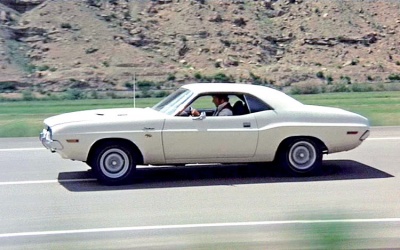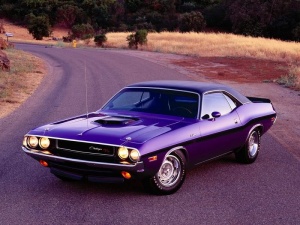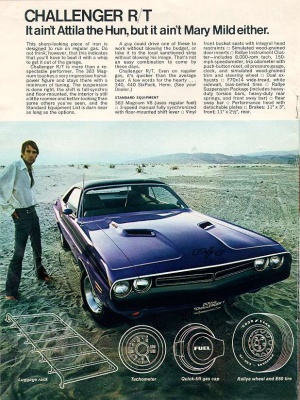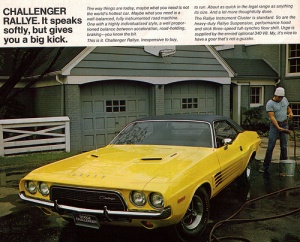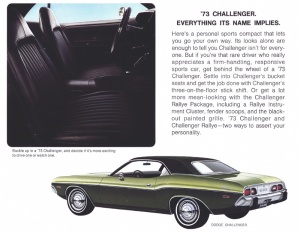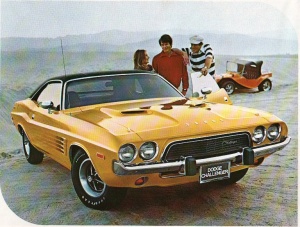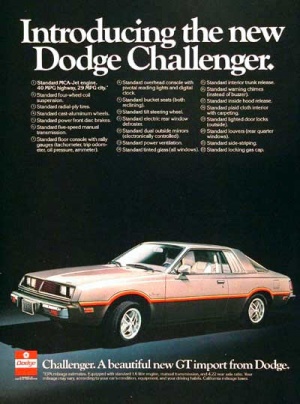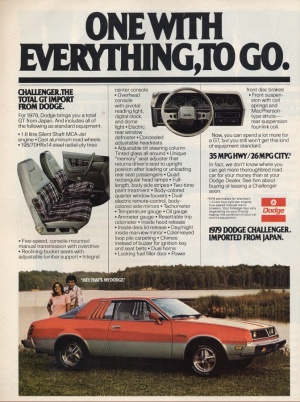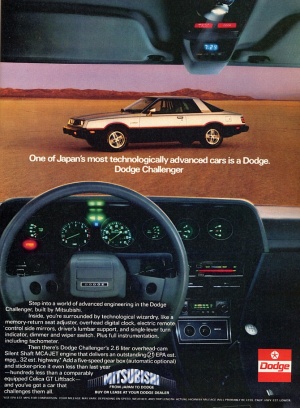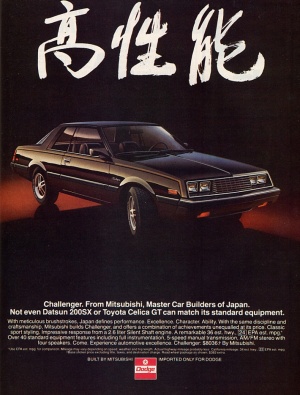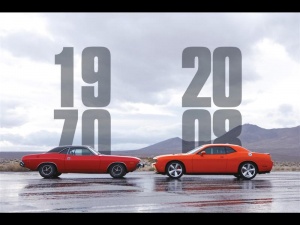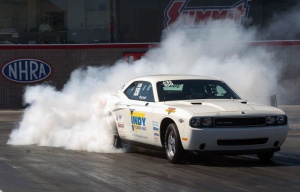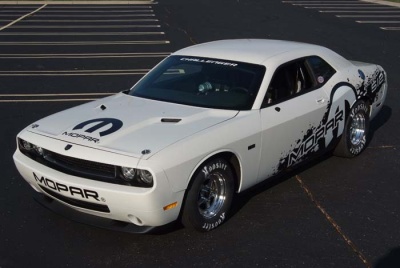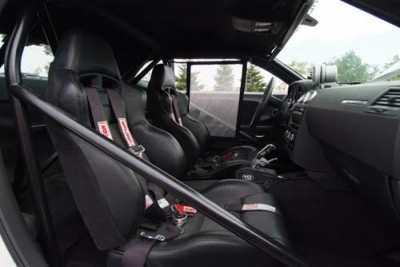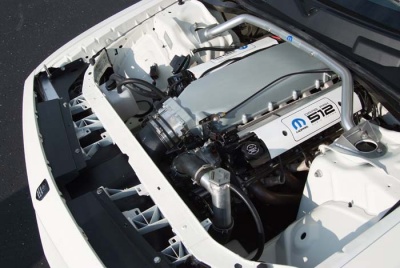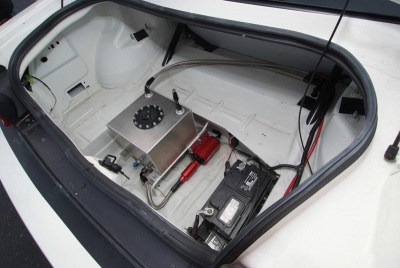Difference between revisions of "Dodge Challenger"
Old Hippie (talk | contribs) |
Old Hippie (talk | contribs) |
||
| Line 49: | Line 49: | ||
Need Collaboration on a intro for the | Need Collaboration on a intro for the | ||
year 1970 | year 1970 | ||
| − | [[Image:1970DodgeChallengerHemi.jpg|thumb| | + | [[Image:1970DodgeChallengerHemi.jpg|thumb|300px|1970 Hemi Challenger]] |
===== [[Sub Models]] for 1970 ===== | ===== [[Sub Models]] for 1970 ===== | ||
| Line 55: | Line 55: | ||
====== [[Challenger T/A]] ====== | ====== [[Challenger T/A]] ====== | ||
| − | [[Image:1970 Dodge Challenger TA.jpg|thumb| | + | [[Image:1970 Dodge Challenger TA.jpg|thumb|300px|Challenger T/A in Panther Pink]] |
need for some collaboration on the T/A | need for some collaboration on the T/A | ||
| Line 132: | Line 132: | ||
Need Collaboration on a intro for the | Need Collaboration on a intro for the | ||
year 1971 | year 1971 | ||
| − | [[Image:71spad4.jpg|thumb| | + | [[Image:71spad4.jpg|thumb|300px|1971 Challenger R/T]] |
===== [[Sub Models]] for 1971 ===== | ===== [[Sub Models]] for 1971 ===== | ||
| Line 197: | Line 197: | ||
==== 1972 Dodge Challenger ==== | ==== 1972 Dodge Challenger ==== | ||
| − | [[Image:4388086562 efbec999a1.jpg|thumb| | + | [[Image:4388086562 efbec999a1.jpg|thumb|300px|1972 Challenger Rallye]] |
Need Collaboration on a intro for the | Need Collaboration on a intro for the | ||
year 1972 | year 1972 | ||
| Line 247: | Line 247: | ||
==== 1973 Dodge Challenger ==== | ==== 1973 Dodge Challenger ==== | ||
| − | [[Image:Dodge challenger ad 73.jpg|thumb| | + | [[Image:Dodge challenger ad 73.jpg|thumb|300px|1973 Challenger]] |
Need Collaboration on a intro for the | Need Collaboration on a intro for the | ||
| Line 296: | Line 296: | ||
==== 1974 Dodge Challenger ==== | ==== 1974 Dodge Challenger ==== | ||
| − | [[Image:74challenger 2.jpg|thumb| | + | [[Image:74challenger 2.jpg|thumb|300px|1974 Challenger]] |
Need Collaboration on a intro for the | Need Collaboration on a intro for the | ||
| Line 367: | Line 367: | ||
==== 1978 Challenger ==== | ==== 1978 Challenger ==== | ||
| − | [[Image:78dodgechallengergtcoupe.jpg|thumb| | + | [[Image:78dodgechallengergtcoupe.jpg|thumb|300px|1978 Challenger Brochure]] |
a little collaborative help is needed for information | a little collaborative help is needed for information | ||
| Line 384: | Line 384: | ||
==== 1979 Challenger ==== | ==== 1979 Challenger ==== | ||
| − | [[Image:Ad dodge challenger red outside 1979.jpg|thumb| | + | [[Image:Ad dodge challenger red outside 1979.jpg|thumb|300px|1979 Challenger Brochure]] |
a little collaborative help is needed for information | a little collaborative help is needed for information | ||
| Line 401: | Line 401: | ||
==== 1980 Challenger ==== | ==== 1980 Challenger ==== | ||
| − | [[Image:Ad dodge challenger 1980 black silver.jpg|thumb| | + | [[Image:Ad dodge challenger 1980 black silver.jpg|thumb|300px|1980 Challenger Brochure]] |
a little collaborative help is needed for information | a little collaborative help is needed for information | ||
| Line 433: | Line 433: | ||
==== 1982 Challenger ==== | ==== 1982 Challenger ==== | ||
| − | [[Image:Ad dodge challenger black 1982.jpg|thumb| | + | [[Image:Ad dodge challenger black 1982.jpg|thumb|300px|1982 Challenger Brochure]] |
a little collaborative help is needed for information | a little collaborative help is needed for information | ||
| Line 465: | Line 465: | ||
== 2008 - 2011 Dodge Challenger == | == 2008 - 2011 Dodge Challenger == | ||
| − | [[Image:2008-dodge-challenger-srt8-1970-1280x960.jpg|thumb| | + | [[Image:2008-dodge-challenger-srt8-1970-1280x960.jpg|thumb|300px|Compare 1970 with 2008 Challenger]] |
==== [[Concept Car]] ==== | ==== [[Concept Car]] ==== | ||
| Line 587: | Line 587: | ||
==== 2009 Challenger ==== | ==== 2009 Challenger ==== | ||
| − | [[Image:Challengerhouse1.jpg|thumb| | + | [[Image:Challengerhouse1.jpg|thumb|300px|[[Old Hippie]]'s Challenger RT with Custom Paint]] |
Production of the expanded 2009 line-up started in early August of 2008. | Production of the expanded 2009 line-up started in early August of 2008. | ||
| Line 678: | Line 678: | ||
==== [[Drag Pak]] ==== | ==== [[Drag Pak]] ==== | ||
| − | [[Image:Doug Duell Challenger.jpg|thumb| | + | [[Image:Doug Duell Challenger.jpg|thumb|300px|Doug Duell and his S/S Challenger]] |
Revision as of 13:18, 28 November 2010
Contents
- 1 Background:
- 2 1970 - 1974 Dodge Challenger
- 2.1 Model Predecessor
- 2.2 Model Successor
- 2.3 Export Versions
- 2.4 1970 - 1974 Challenger Related Models
- 2.5 Competition
- 2.6 Platform
- 2.7 Year by Year Changes, Production Numbers, and Cost:
- 3 1978 - 1983 Dodge Challenger
- 3.1 Body Styles
- 3.2 Platform For 1978 - 1983 Dodge Challenger
- 3.3 Engines 1978 - 1983 Dodge Challenger
- 3.4 Transmissions 1978 - 1983 Dodge Challenger
- 3.5 Length, width, height, wheelbase 1978 - 1983 Dodge Challenger
- 3.6 1978 - 1983 Challenger Related Models
- 3.7 1978 Challenger
- 3.8 1979 Challenger
- 3.9 1980 Challenger
- 3.10 1981 Challenger
- 3.11 1982 Challenger
- 3.12 1983 Challenger
- 4 2008 - 2011 Dodge Challenger
- 4.1 Concept Car
- 4.2 Body Styles of the 2008 - 2011 Dodge Challenger
- 4.3 Platform of the 2008 - 2011 Dodge Challenger
- 4.4 Related Models to the 2008 - 2011 Dodge Challenger
- 4.5 Engines of the 2008 - 2011 Dodge Challenger
- 4.6 Transmissions of the 2008 - 2011 Dodge Challenger
- 4.7 Length, width, height, wheelbase of the 2008 - 2011 Dodge Challenger
- 4.8 2008 Challenger
- 4.9 2009 Challenger
- 4.10 2010 Challenger
- 4.11 2011 Challenger
- 4.12 SRT-10 Concept
- 4.13 Drag Pak
- 5 Featured in Movies or TV Shows
- 6 Magazine References:
- 7 External Links & Wiki Topic References
Background:
While Plymouth was one of the first Makes to introduce a Pony Car with its 1964 introduction of the Barracuda, its sister division Dodge, had to wait until 1970 for its first Pony Car -- the Challenger. While both the Dodge and Plymouth Pony Cars of 1970-1974 were E-Bodies, the Challenger had a wheelbase 2" longer, mostly for it to compete with the more luxurious Mercury Cougar.
From 1978 to 1983, Dodge sold a version of the 4-cylinder Mitsubishi Plymouth Sapporo through its dealers as the Challenger. The main difference being the colors offered by each of the divisions, and the Sapporo having a Silver colored plastic grill while the Challenger had a black colored plastic grill.
With Pony Cars making a come back a few years ago, in 2008 Dodge brought back the Challenger, after a 34 year absence as an American Pony car. Like Ford with the Mustang, and Chevrolet with the Camaro -- the Challenger has a retro look to it, having a close resemblance to the Challenger of the early 70s.
1970 - 1974 Dodge Challenger
Model Predecessor
The Challenger is the first and only Pony Car for Dodge
Model Successor
The Challenger is the first and only Pony Car for Dodge
Export Versions
The export versions were basically the same as the domestic version. For a brief period they were sold in France through Simca, and a version was assembled in Switzerland to Swiss standard by AMAG. Both version are very rare today.
1970 - 1974 Challenger Related Models
Competition
- Ford Mustang
- Chevrolet Camaro
- Pontiac Firebird
- Mercury Cougar
- AMC Javelin
Platform
All of the first generation Dodge Challengers were on the 1970-1974 E-Body, which was a modified version of the B-Body -- as used exclusively for the 197-1974 Plymouth Barracuda/Cuda and Dodge Challenger.
Year by Year Changes, Production Numbers, and Cost:
The below is information specific to the individual years of the first version of the Challenger.
1970 Dodge Challenger
Need Collaboration on a intro for the year 1970
Sub Models for 1970
Challenger T/A
need for some collaboration on the T/A (Details, Colors, Production Numbers)
Challenger R/T
need for some collaboration on the RT (Details, Colors, Production Numbers)
Challenger SE
need for some collaboration on the SE (Details, Colors, Production Numbers)
Production Numbers for 1970
- 1970 = 76,935 *includes 2,539 T/As
Available Colors for 1970
- Light Gold Metallic-FY4,
- Plum Crazy (purple)-FC7,
- Sublime (green)-FJ5,
- Go-Mango(orange)-EK2,
- Hemi Orange-EV2,
- Banana (yellow)-FY1,
- Light Blue Metallic-EB3,
- Bright Blue Metallic-EB5,
- Dark Blue Metallic-EB7,
- Rallye Red-FE5,
- Light Green Metallic-FF4,
- Dark Green Metallic-EF8,
- Dark Burnt Orange-FK5,
- Beige-BL1,
- Dark Tan Metallic-FT6,
- White-EW1,
- Black-TX9,
- Cream-DY3,
- Panther Pink-FM3
Engines for 1970
- C: 225 cu in (3.7 L) Slant 6 I6: 145 bhp
- G: 318 cu in (5.2 L) LA V8: 230 bhp
- H: 340 cu in (5.6 L) LA V8: 275 bhp
- J: 340 cu in (5.6 L) LA V8 Six-Pack: 290 bhp 1970 *T/A ONLY
- L: 383 cu in (6.3 L) B V8: 290 bhp and 330 bhp (246 kW) 1970-1971
- N: 383 cu in (6.3 L) B V8: 335 bhp 1970-1971
- U: 440 cu in (7.2 L) RB V8: Available in Magnum 4-barrel carbureted form 375 bhp 1970-1971
- V: 440 cu in (7.2 L) RB V8 Six-Pack: (3 × 2-barrel carburetors) 390 bhp 1970-1971
- R: 426 cu in (7 L) Hemi V8: 425 bhp costing an extra US$1,228 and very few sold. 1970-1971
Transmissions for 1970
need Collaboration on the available transmissions for 1970
Length, width, height, wheelbase for 1970
- Length 191.3 in
- Width 76.1 in
- Height 50.9 in
- Wheelbase 110.0 in
1971 Dodge Challenger
Need Collaboration on a intro for the year 1971
Sub Models for 1971
Challenger R/T
need for some collaboration on the RT (Details, Colors, Production Numbers)
Production Numbers for 1971
- 1971 = 26,299
- Hardtop I6: 1,672
- Hardtop V8: 18,956
- Convertible I6: 83
- Convertible V8: 1,774
- Hardtop V8 R/T: 3,814
Available Colors for 1971
- Light Gunmetal Metallic-GA4,
- Light Blue Metallic-GB2,
- Bright Blue Metallic-GB5,
- Dark Blue Metallic-GB7,
- Dark Green Metallic-GF7,
- Light Green Metallic-GF3,
- Gold Metallic-GY8,
- Dark Gold Metallic-GY9,
- Dark Bronze Metallic-GK6,
- Tan Metallic-GT5,
- Bright Red-FE5,
- Bright White-GW3,
- Black-TX9,
- Butterscotch-EL5,
- Citron Yella-GY3,
- Hemi Orange-EV2,
- Green Go-FJ6,
- Plum Crazy-FC7,
- Top Banana-FY1
Engines for 1971
- C: 225 cu in (3.7 L) Slant 6 I6: 145 bhp
- G: 318 cu in (5.2 L) LA V8: 230 bhp
- H: 340 cu in (5.6 L) LA V8: 275 bhp
- J: 340 cu in (5.6 L) LA V8 Six-Pack: 290 bhp 1970 *T/A ONLY
- L: 383 cu in (6.3 L) B V8: 290 bhp and 330 bhp (246 kW) 1970-1971
- N: 383 cu in (6.3 L) B V8: 335 bhp 1970-1971
- U: 440 cu in (7.2 L) RB V8: Available in Magnum 4-barrel carbureted form 375 bhp 1970-1971
- V: 440 cu in (7.2 L) RB V8 Six-Pack: (3 × 2-barrel carburetors) 390 bhp 1970-1971
- R: 426 cu in (7 L) Hemi V8: 425 bhp costing an extra US$1,228 and very few sold. 1970-1971
Transmissions for 1971
need Collaboration on the available transmissions for 1971
Length, width, height, wheelbase for 1971
- Length 191.3 in
- Width 76.1 in
- Height 50.9 in
- Wheelbase 110.0 in
1972 Dodge Challenger
Need Collaboration on a intro for the year 1972
Sub Models for 1972
Production Numbers for 1972
- 1972 = 22,919
- Hardtop I6: 842
- Hardtop V8: 15,175
- Hardtop V8 Rallye: 8,123
Available Colors for 1972
- Light Blue-HB1,
- Bright Blue Metallic-HB5,
- Bright Red-FE5,
- Light Green Metallic-GF3,
- Dark Green Metallic-GF7,
- Eggshell White-GW1, Black-TX9,
- Honeydew-GY4,
- Light Gold-GY5,
- Gold Metallic-GY8,
- Dark Gold Metallic-GY9,
- Dark Tan Metallic-GT8,
- Light Gunmetal Metallic-GA4,
- Medium Tan Metallic-GA4,
- Super Blue-GB3,
- Hemi Orange-EV2,
- Top Banana-FY1
Engines for 1972
- G: 318 cu in (5.2 L) LA V8: 230 bhp (172 kW) 1970-1974
- H: 340 cu in (5.6 L) LA V8: 275 bhp (205 kW) 1970-1973
Transmissions for 1972
need Collaboration on the available transmissions for 1972
Length, width, height, wheelbase for 1972
- Length 191.3 in
- Width 76.1 in
- Height 50.9 in
- Wheelbase 110.0 in
1973 Dodge Challenger
Need Collaboration on a intro for the year 1973
Sub Models for 1973
Production Numbers for 1973
- 1973 = 27,930
- Note: All models were V8-powered hardtops
Available Colors for 1973
- Black-TX9,
- Dark Silver Metallic-JA5,
- Eggshell White-EW1,
- Parchment-HL4,
- Light Gold-JY3,
- Dark Gold Metallic-JY9,
- Gold Metallic-JY6,
- Bronze Metallic-GK6,
- Pale Green-JF1,
- Dark Green Metallic-JF8,
- Light Blue-HB1,
- Super Blue-TB3,
- Bright Blue Metallic-GB5,
- Bright Red-FE5,
- Top Banana-FY1,
- Light Green Metallic-GF3
Engines for 1973
- G: 318 cu in (5.2 L) LA V8: 230 bhp (172 kW) 1970-1974
- H: 340 cu in (5.6 L) LA V8: 275 bhp (205 kW) 1970-1973
Transmissions for 1973
need Collaboration on the available transmissions for 1973
Length, width, height, wheelbase for 1973
- Length 191.3 in
- Width 76.1 in
- Height 50.9 in
- Wheelbase 110.0 in
1974 Dodge Challenger
Need Collaboration on a intro for the year 1974
Sub Models for 1974
Production Numbers for 1974
- 1974 = 11,354
- Note: All models were V8-powered hardtops
Available Colors for 1974
- Yellow Blaze-KY5,
- Golden Fawn-KY4,
- Parchment-HL4,
- Bright Red-FE5,
- Deep Sherwood Metallic (Green)-KG8,
- Eggshell White-EW1,
- Black-TX9,
- Light Blue-HB1
Engines for 1974
- G: 318 cu in (5.2 L) LA V8: 230 bhp (172 kW) 1970-1974
- J: 360 cu in (5.9 L) LA V8: 245 bhp (183 kW) 1974
Transmissions for 1974
need Collaboration on the available transmissions for 1974
Length, width, height, wheelbase for 1974
- Length 191.3 in
- Width 76.1 in
- Height 50.9 in
- Wheelbase 110.0 in
1978 - 1983 Dodge Challenger
The Forgotten Challengers
In 1978, Chrysler partnered up with Mitsubishi to sell their small coupe sold overseas as the Sapporo through Dodge as the Challenger. Plymouth sold virtually the same car (with a silver grill instead of the Challenger's black grill, and in different body colors) through its dealers. These cars came with an unusually large (for the era) 2.6 liter 4 cylinder engine. Mitsubishi had pioneered smoothing out the larger displacement 4-cylinder engines with its balanced crank shafts. The Challenger and Plymouth from this era had brisk performance, when compared to other 4-Cylinder Sport Coupes of the same era.
Body Styles
The only version of this era Challenger was a 2-Door Sport Coupe
Platform For 1978 - 1983 Dodge Challenger
Engines 1978 - 1983 Dodge Challenger
- 1.6 L (98 cu in)
- 2.6 L (159 cu in)
Transmissions 1978 - 1983 Dodge Challenger
- 5-speed Manual
- 3-speed Automatic
Length, width, height, wheelbase 1978 - 1983 Dodge Challenger
178.1 in, 65.9 in, 53 in-53 in.3, 99.6 in
1978 - 1983 Challenger Related Models
1978 Challenger
a little collaborative help is needed for information specific to this year of Challenger
1978 Challenger Colors
a little collaborative help is needed for colors available specific to this year of Challenger
1978 Challenger Production Numbers
a little collaborative help is needed for Production Numbers specific to this year of Challenger
1979 Challenger
a little collaborative help is needed for information specific to this year of Challenger
1979 Challenger Colors
a little collaborative help is needed for colors available specific to this year of Challenger
1979 Challenger Production Numbers
a little collaborative help is needed for Production Numbers specific to this year of Challenger
1980 Challenger
a little collaborative help is needed for information specific to this year of Challenger
1980 Challenger Colors
a little collaborative help is needed for colors available specific to this year of Challenger
1980 Challenger Production Numbers
a little collaborative help is needed for Production Numbers specific to this year of Challenger
1981 Challenger
a little collaborative help is needed for information specific to this year of Challenger
1981 Challenger Colors
a little collaborative help is needed for colors available specific to this year of Challenger
1981 Challenger Production Numbers
a little collaborative help is needed for Production Numbers specific to this year of Challenger
1982 Challenger
a little collaborative help is needed for information specific to this year of Challenger
1982 Challenger Colors
a little collaborative help is needed for colors available specific to this year of Challenger
1982 Challenger Production Numbers
a little collaborative help is needed for Production Numbers specific to this year of Challenger
1983 Challenger
a little collaborative help is needed for information specific to this year of Challenger
1983 Challenger Colors
a little collaborative help is needed for colors available specific to this year of Challenger
1983 Challenger Production Numbers
a little collaborative help is needed for Production Numbers specific to this year of Challenger
2008 - 2011 Dodge Challenger
Concept Car
The design of the third generation Challenger is generally credited to automotive designer Michael Castiglione, working out of the DaimlerChrysler's Pacifica Design Studio in Carlsbad, California.
Its shape is closely modeled after the iconic shape of the 1970 and 1971 Dodge Challenger, now two of the world's most highly prized collector cars. But it's too easy to dismiss Castiglione's design as a carbon copy of the classic form. It isn't. In fact, the car took a year and a half to design.
Modern interpretation of a classic The process of creating the car began 2004. The idea was to develop a hot-looking performance coupe using Chrysler's rear-wheel-drive LX platform and its Hemi V8. In other words, come up with a coupe version of the Dodge Charger RT.
Early Castiglione sketches, the car had a lot of Cuda influences, which made a lot of sense. The 1970 and 1971 Plymouth Barracuda was the sister car to the Challenger, and it's the more iconic of the two machines today. But the death of Plymouth in 2001 killed the Cuda Concept from ever seeing the light of day. Instead the car had to be a Dodge.
"I drew over 1,000 cars, 900 of which are in the trash," says Castiglione. Early sketches were all over the map, from cars with cab forward shapes to others with four individual taillights and semicircular grilles like Dodge used on the 1972-'74 Challenger.
"Early on, we just tried to capture 'Mopar' in the designs," says Castiglione who beat out two other designers for the job. "We tried to capture the beveled edges that were uniquely Mopar back in the muscle car days. If you look at an old Challenger or Charger, the lines have a snap to them. Once we figured that out, then we got more focused."
Once focused on the 1970 Challenger, an example was brought in to the design studio for inspiration. The 383-powered R/T convertible, which was painted in the classic color of Plum Crazy purple, belonged to a friend of a friend, and was chosen because it had the standard twin-scoop hood instead of the optional Shaker scoop. Castiglione had decided to emulate that hood because it was a unique Mopar design.
"The Shaker just isn't unique to Dodge," he says. "Ford and GM also used them back then." It was also a four-speed car, which means it had the iconic pistol-grip shifter. This would later influence Alan Barrington, who designed the concept car's interior.
Challenger only in your mind's eye "Instead of merely recreating the 1970 model," says Tom Tremont, vice president of Advanced Vehicle Design, "the designers endeavored to build a Challenger most people see in their mind's eye."
That requirement meant varying from the old car's long-hood/short-deck profile was impossible. This caused Castiglione serious problems. The touchdown of the windshield is much farther forward on the modern LX chassis than it is on the old car. This moves the center of the car closer to the front wheels and inherently shortens the front end.
He compensated for this by raking the windshield radically compared to the Charger's front glass, and increasing the size of the front overhang to make the hood look longer. He also put an angled cut in the door seam to be sympathetic to the windshield rake, and moved the side mirrors farther back on the doors to fool the eye into seeing a longer hood.
Castiglione also had to find a way to incorporate the old car's asymmetrical wheelwell openings and its tucked-in rocker sections, both of which go against conventional modern car design. He achieved the desired effect by widening the front and rear tracks to 64 and 65 inches, which is even wider than the old 1970 model, and moving the rocker panels in. He also successfully reversed the basic proportions of the old car to better reflect DaimlerChrysler's modern design language of a thicker body with a shrunken greenhouse. The result is a very modern-looking coupe that perfectly fits in with Dodge's present model lineup.
Details left out include the old car's oversized chrome gas cap, which just didn't look right with the concept car's otherwise missing brightwork, and a modern version of the original Challenger's hood pins.
Long, low, wide and fast' On February 1, 2005, after nearly a year's work on the Challenger's design, the car would be built into a full-size running concept car for the 2006 Detroit Auto Show. Castiglione's deadline to hand off the full-size clay model and all of his computer data to Metalcrafters was the first week of June 2005.
Located in Fountain Valley, California, Metalcrafters built all of DaimlerChrysler's concept cars and needed about six months to build the Challenger, which is made entirely of carbon fiber. The concept car is 197.8 inches long and 78.6 inches wide, the finished car is 2.3 inches shorter and a full 4 inches wider than a four-door Charger. It's also 1.2 inches lower and sits on a 116-inch wheelbase, which is 4 inches shorter than a Charger's wheelbase and 6 inches longer than the wheelbase of a 1970 Challenger.
It all rides on massive five-spoke wheels and oversized tires that are literally squeezed up under the body. "We did a lot of wheels that looked like the original rallys," says Castiglione. "But the instant we brought the spokes out to the rims it made the wheels look larger and we wanted the largest wheels possible." He ended up with 20-by-9-inch front and 21-by-10-inch rear wheels wrapped in 255/40R20 front and 265/45R21 specially made Goodyear tires.
The paint color was also custom mixed for the car. "It looks heritage," says Castiglione. "But it's not a literal interpretation of Hemi Orange."
Under the hood, however, is some real Hemi Orange. It's on the valve covers of the 425-hp, 6.1-liter V8 that the Challenger Concept borrowed from a Dodge Charger SRT-8. The underhood look is the work of John Sodano, another designer at Pacifica. "This is the kind of car that people will want to look under the hood," Sodano says. "So I drew back to the original Hemis for inspiration."
Sodano decided that the inner fenders would be body color like Dodge did back in 1970, and the engine would be cleaned up of any unsightly accessories like an air-conditioning compressor. He also designed all the ducting that directs air from the working hoodscoops into the engine's intake plenum and spec'd out a Flowmaster exhaust with no catalytic converters.
The Hemi is backed by a six-speed manual transmission, and Dodge said the combination is good for 0-60 mph in 4.5 seconds, a quarter-mile run in 13 seconds flat and a top speed of 174 mph.
Familiar, but modern inside Eight weeks before the design went to Metalcrafters, Barrington, 31, got to work on the interior. "When you ask people what they remember about the old Challenger's interior," says Barrington, "it's always the pistol-grip shifter, three-spoke steering wheel, the bank of round gauges and the vailstyle pleat upholstery." After 50 different designs, Barrington's final iteration incorporates all that stuff, yet it's as modern as can be.
A good example of his ability to make the old new again is the car's pistol-grip shifter. In the old car it had an old Western form to it, grab the new one, however, and it feels more like a Glock or some other modern firearm.
"I wanted a coherent cohesive design that looked like the interior and exterior of the car had the same author," he says. "That's why the faceted trapezoidal form of the instrument panel and the doorpanels mirrors the shape of the grille and the racetrack around the taillights.
"I also used brightwork to highlight the areas the driver's attention should be: the shifter, gauges, etc.," Barrington adds. The rest of the interior falls away to darkness. On the old car the designers used wood in a similar way.
To form the gauge cluster, Barrington incorporated elements of the old rally pack of gauges and the standard cluster. There are fewer and larger dials than the old standard setup had, but the dial on the far left is the largest as it used to be on the standard setup. When designing the Challenger's gauges, Barrington also drew influence from a bare engine block. "I designed the gauges' holes to appear as if you are looking down into the engine cylinders with the head off," he relates.
He also filled the largest dial with an onboard computer that can calculate the performance numbers like top overall speed, quarter-mile time and top speed for each gear.
Further cool touches include the toggle switches, the bold mechanical-looking radio and climate controls and the thick three-spoke wheel with its circular hub and pierced silver spokes. It evokes the original car's "Tuff" wheel as does the steering column ribbing. The seats are similar in shape to the buckets you get in a Charger SRT-8, only Barrington had them covered in unique black upholstery with horizontal pleats. The upholstery in a 1970 Challenger featured vertical pleats.
Body Styles of the 2008 - 2011 Dodge Challenger
All 2008 up versions of the Dodge Challenger are a 2-Door Coupe
Platform of the 2008 - 2011 Dodge Challenger
Related Models to the 2008 - 2011 Dodge Challenger
Engines of the 2008 - 2011 Dodge Challenger
- 6.1 L (370 cu in) HEMI V8
- 5.7 L (345 cu in) HEMI V8 (2009 & later)
- 3.5 L (214 cu in) SOHC V6 (2009 & later)
Transmissions of the 2008 - 2011 Dodge Challenger
- 4-speed Automatic (2009 & later V6)
- 5-speed Automatic
- 6-speed Manual (2009 & later)
Length, width, height, wheelbase of the 2008 - 2011 Dodge Challenger
- Length 197.7 in
- Width 75.7 in
- Height 57.0 in
- Wheelbase 116.0 in
2008 Challenger
On December 3, 2007, Chrysler started accepting deposits for the 3rd Dodge Challenger, which debuted on February 6, 2008 at the Chicago Auto Show and Philadelphia International Auto Show simultaneously. With a List Price of $40,095US, the 2-door coupe shared a common design with the 1st Challenger, albeit being significantly longer and taller. The Challenger chassis is a shorter wheelbase version of the LX platform that underpinned the Dodge Charger, Dodge Magnum, and the Chrysler 300. The LX platform was itself adapted from the Mercedes E Class.
All (7119) 2008 models were SRT8s and equipped with the 6.1L Hemi and a 5-speed AutoStick automatic transmission. The entire 2008 US run of 6,400 cars were pre-sold (many marked up far above the MSRP).
Production started on May 8, 2008.
Chrysler Canada offered another 670+ SRTs uniquely badged as the Challenger 500, exclusively for Canadian Dodge dealers. Chrysler of Mexico offered 100 of these cars with a 6.1 liter V8 and 425 brake horsepower to its dealers.
At the Barrett-Jackson Auction, Chrysler auctioned off two 2008 SRT8s for charity with car #1 selling for $400,000.00 to benefit the notMYkid non-profit organization, and a "B5" Blue #43 car received a winning bid of $228,143.43 -- with the proceeds going to Victory Junction Gang Camp.
Production of the limited edition 2008 SRT/8s ended in July 2008
Colors Available for the 2008 Challenger
a little collaborative help is needed for colors available specific to this year of Challenger
Production Number Breakdown for the 2008 Challenger
- Calendar Year in the USA were 17,423
- 2008 Model Year Sales were 7119
2009 Challenger

Production of the expanded 2009 line-up started in early August of 2008.
Chrysler debuted the full Dodge Challenger line for 2009, with three different US trims - SE, R/T, SRT8; and the SXT for the Canadian Market.
In addition to the SRT8, which remained unchanged except for the optional 6 speed manual, the line-up included the SE and SXT which offered the 250 HP 3.5 V6, and the R/T which had a 370 hp and 398 lb·ft torque 5.7 liter Hemi when coupled with the 5 speed automatic, and 375 hp (280 kW) and 404 lb·ft (548 N·m) when matched with the same Tremec 6 speed manual stick as the SRT8.
Colors Available for the 2009 Challenger
a little collaborative help is needed for colors available specific to this year of Challenger
Production Number Breakdown for the 2009 Challenger
- US Calendar Year sales was 25,852
SE
R/T
SRT-8
Special Packages
There have been a number of Limited Production Models of the 2009 version of the Challenger We are looking for a little help (collaboration) with listing and describing these Limited Productions
2010 Challenger
need collaboration on the Challenger for 2010
Colors Available for the 2010 Challenger
a little collaborative help is needed for colors available specific to this year of Challenger
Production Number Breakdown for the 2010 Challenger
a little collaborative help is needed for Production Numbers specific to this year of Challenger
SE
R/T
SRT-8
Special Packages
There have been a number of Limited Production Models of the 2010 version of the Challenger We are looking for a little help (collaboration) with listing and describing these Limited Productions
2011 Challenger
need collaboration on the Challenger for 2011
Colors Available for the 2011 Challenger
a little collaborative help is needed for colors available specific to this year of Challenger
Production Number Breakdown for the 2011 Challenger
a little collaborative help is needed for Production Numbers specific to this year of Challenger
SE
R/T
SRT-8
Special Packages
There have been a number of Limited Production Models of the 2011 version of the Challenger We are looking for a little help (collaboration) with listing and describing these Limited Productions
SRT-10 Concept
Drag Pak
2009 Drag Paks
The Below is the text to the original Press Release from Mopar Performance
Yearning to relive the muscle era is passé. We're ready to relive the days of high-horsepower super-stock specials being built at the factory. Forty years after Chrysler built its original drag-track specials, the 2009 Dodge Challenger Drag Race Package allows us to do just that.
While vehicle technology has changed tremendously over the past forty years, the premise behind the Drag Race Package cars hasn't: pack plenty of power into a car while stripping out the portly non-essentials. Given the 4140-lb curb weight of the 2008 Challenger SRT8, there was plenty of material for engineers to strip.
Starting with a stock Challenger body-in-white, Mopar's engineers ripped out nearly 1000 lbs of equipment deemed unnecessary for the track. Although the Drag Pack cars will roll down the same Brampton, Ontario, assembly line as the street cars, these models are spared the addition of body sealer, sound deadening, a ventilation system, airbags, and rear seats. If that wasn't enough, Mopar removed the windshield wiper assembly, side- and rear-impact beams - and subsequently, any chance the car can be DOT-certified for the street. As a result, the Drag Race Package car weighs in at approximately 1000 lbs lighter than an SRT8.
While those extra parts remain in Chrysler's parts bins, the Challenger Drag Race Package does gain some new equipment. Included with each package car is a new composite lift-off hood (yes; the scoop is functional), polycarbonate windows, manual rack-and-pinion steering, a lightweight brake system and a good old-fashioned cable throttle linkage. Mopar also modified the Challenger's wheelbase, shortening it a half inch to 116 inches, and pushed the engine mounts rearward for better weight distribution.
Those solid mounts will hold one of three available engines: a 5.7-liter or 6.1-liter HEMI V-8, or a 360 cubic-inch 'Magnum Wedge' V-8, coupled to either an automatic or manual transmission. Although performance numbers haven't yet been released, a typical 360 crate motor produces anywhere between 325 and 395 hp; we'd imagine the 5.7- and 6.1-liter motors will crank out even more power than their street versions, which are rated at 375 hp and 425 hp, respectively.
In order to qualify the Challenger Drag Race Package car to run in NHRA's Comp, Super Stock and Stock classes, Dodge plans to build at least 100 examples for customers and racers alike. Expect pricing to run in the low- to mid-$30,000s - approximately the same as a stock Challenger SRT8.
Current 2009 Roster
The below is a roster of owners of the 2009 Drag Paks. Please update any verified changes my adding an entry for that number under the previous owner, without removing the previous owner.
000. This is a car Doug Duell built after Mopar Performance announced the Drag Pak -- but during the time before MP could build and deliver
1. Don Garlits 6.1 A/SA
2. Larry Griffith
3. Randy Warford
4.
5.
6. Irvin Johns
7. Jim Pancake
8.
9. At Donato Engineering being prepared for owner in Sweden 6.1 Manual Black RaceJunk
10.
11. Fred Hanson 6.1
12.
13. PB Candies 6.1
14. Jeg Couglin Jr.
15. Al Carpiniello 6.1 Auto
16. Jeff Teuton 5.9 Magnum
17.
18. Scott Justo
19. Derek Atwill (6.1) Ottawa Ontario
20. Mel Warford Current Status
21. Mike Booker
22. Chuck Lofgren 6.1
23. At Donato Engineering being prepared for owner in Sweden
24. David Wertman 6.1 Auto A/SA
25. Tom Lee 6.1
26. Larry Curtis 6.1
27.
28.
29. Tom Gaynor 6.1
30. John McLeod
31.
32. Al Smyth 6.1
33.
34.
35. Roy/Allan Johnson 6.1 Auto
36. Irvin Johns 5.7 Stick car
37.
38.
39. Mike Wagner 5.7 Manual
40. Denny Bairel 5.7 6-speed
41.
42. Dave Schultz 6.1 6-Speed Old Hippie
43. Mack Reeves 6.1 MoparMack
44.
45.
46. Alex Cortezzo 6.1 A/SA
47. J.C. Beattie Jr
48. John Overby 6.1 Auto
49.
50.
51. Wallace Sanford Cartersville, Ga
52. Jeff and Sandra Hull 6.1 6-speed WV
53. Minuteman Missile the Merryfield family
54.
55.
56. Jerry Hatch ME 6.1 Stick (A/SA)
57.
58.
59.
60.
61.
62. Dennis Radford (6.1) Oregon
63. Glen Lange, Indiana
64. Peter Ash
65. Bucky Hess
66.
67.
68.
69.
70.
71.
72. Len Grimsley
73.
74.
75.
76.
77.
78.
79.
80. Jeff Teuton stick shift 5.7
81. Jeff Teuton stick shift 5.9
82.
83.
84. John Dusenbery 5.9
85.
86.
87.
88. Tom Johns (6.1) Alaska.
89.
90.
91.
92.
93.
94.
95. (6.1) Marcelus Grace LA.
96. Larry Griffith
97.
98. (6.1) Buckner Racing Texas
99. Dempsey Pendarvis, Louisana
100. Doug Duell
Reference for 2009 Roster: http://www.moparstyle.com/forums/2008-up-challengers-se-rt-srt8/9364-challenger-drag-pack-roster.html
2010 Drag Pak
The changes made to the 2010 Drag Pak Challengers are Strange front brakes instead of Mark Williams, the master cylinder is and was a Strange unit. The rear suspension cradle is now a trailer axle instead of the stock independent rear suspension the racer would be replacing anyway. The wheels are white trailer wheels instead of silver/gray. They are trailer wheel/tires for transport only. The rear trunk has the cylinders so you don't have to hold it open with a stick. The 2009s had no cylinders installed and we bought them from the dealer and installed them on the cars we built. The sheet metal cover to go over the opening above the rear suspension is not welded in to allow the chassis builder to have access to the trunk area before the cover is welded in place. The seats are aftermarket and look a lot like the Viper seats that came in the 2009s. There are no other noticable changes on the 2010s.
Current 2010 Roster
The below is a roster of owners of the 2010 Drag Paks. Please update any verified changes my adding an entry for that number under the previous owner, without removing the previous owner
1.
2.
3.
4.
5.
6. Bernie Ryburn III, Car at B& B Race Cars being prepped
7.
8.
9.
10.
11. Daren Poole Admas
12. Mark Norris (Tx/Ar) 6.1/904 IHRA ?/FIA (@ B&B Fabrication in Tn)
13. Daren Poole-Adams, Shelby, NC (Automatic)
14.
15.
16.
17.
18. Dennis Breeden, Plainville, IN.
19.
20.
21.
22.
23.
24.
25.
26.
27.
28.
29.
30.
31.
32.
33.
34.
35. Brent Jones, Illinois
36.
37.
38.
39.
40.
41.
42.
43.
44.
45.
46.
47. David Kirkland, Parker Texas
48.
49.
50.
51.
2011 V-10 Drag Pak
The race-only V-10 powered rear-wheel drive 2011 Mopar Challenger Drag Pak features an 8.4-liter 512 cubic-inch engine with a 2-speed automatic transmission. Mopar will showcased its new drag car at the Dodge Viper Owner’s Invitational in Salt Lake City.
“With the introduction of our new 2011 Mopar Challenger Drag Pak, Mopar will be the only place to get a factory-built V-10-powered race-ready drag car,” said Pietro Gorlier, President and CEO of Mopar, Chrysler Group’s service, parts and customer-care brand. “Mopar’s new Challenger Drag Pak is a race rocket that will appeal to racers, collectors, dealers, and Dodge Viper owners.”
Based on the 2011 Dodge Challenger and finished in a Stock Eliminator and Super Stock configuration, the 2011 Mopar Challenger V-10 Drag Pak is the first and only 500-plus cubic-inch V-10 drag-race package car. The car features competition wheels and tires, a Mopar solid rear axle with performance gear ratio, a 2-speed drag race transmission with integrated roll control, a complete competition fuel system with fuel cell, and a complete interior with gauge package.
The Mopar Challenger V-10 Drag Pak features a Bright White paint scheme with color options. The Manufacturer’s Suggested Retail Price (MSRP) is $85,512
Mopar offers three options with this vehicle. First, the Competition Package includes an eight-point roll cage, six-point safety harness and a mesh window net (MSRP: $7,950, part number P5155820). Second, a Mopar logo body wrap (MSRP: $950, part number P5155892) and a range of body colors (MSRP: $6,800, part number P5155893). With the Competition Package, the car is ready to go down the drag strip.
2011 Mopar Challenger V-10 Drag Pak Highlights
- Identification plate with unique serial number sequence
- Primed and painted body, color options available
- 512 cid V-10 engine
- Unique engine calibration
- 2-speed automatic transmission with shift assembly and built-in roll control
- Special body-in-white modified for drag racing
- No windshield wiper assembly
- No HVAC system (includes block off plates)
- No rear seats
- No power-steering system
- No underbody heat shields
- Complete fuel cell assembly
- Race headers with collectors
- Modified tunnel for transmission clearance and one-piece drive shaft
- Raised floor above differential for solid-axle conversion clearance
- Polycarbonate door windows
- Smart-glass door window system
- Solid engine mounts
- Mopar solid rear axle
- Lightweight seats to accommodate 6-point harness
- Special modified K-member with drop-out crossmember
- Lightweight drag-race only front brake assembly
- Manual rack-and-pinion steering
- Front chin spoiler
- Lightweight cooling module with electric fan
- Lightweight instrument panel assembly
- Special cable-operated decklid release
- Special cable-operated throttle pedal and linkage
- Race-style wheels and tires
Current 2011 V-10 Drag Pack Roster
The below is a roster of owners of the 2011 V-10 Drag Packs. Please update any verified changes my adding an entry for that number under the previous owner, without removing the previous owner
1.
2.
3.
4.
5.
6.
7.
8.
9.
10.
11.
12.
13.
14.
15.
16.
17.
18.
19.
20.
21.
22.
23.
24.
25.
26.
27.
28.
29.
30.
31.
32.
33.
34.
35.
36.
37.
38.
39.
40.
41.
42.
43.
44.
45.
46.
47.
48.
49.
50.
Featured in Movies or TV Shows
Vanishing Point
* NCIS-LA
Magazine References:
- Mopar Action February2011 pages 30-35 It's A Draw
